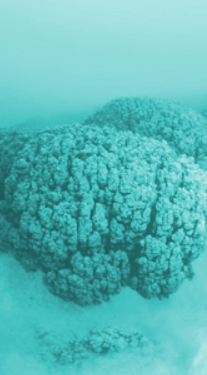Reef scaffolds eroding
 The scaffolds that help hold together the world’s tropical reefs are at risk from acidification.
The scaffolds that help hold together the world’s tropical reefs are at risk from acidification.
Extensive sampling of the Great Barrier Reef fossil record has shown that the calcified scaffolds that help stabilise and bind its structure become thin and weaker as pH levels fall.
A new study has shown that this is a global process, affecting reefs worldwide.
The ‘reef glue’ is made up of calcified deposits from microbes that live within reef formations around the world.
Known as microbialites, these structures play an important role in many types of aquatic systems and are probably best known from the ancient stromatolites that are built by cyanobacteria in Western Australia, which are billions of years old.
In some types of reef systems, including the Great Barrier Reef, microbialite crusts likely formed by sulphate-reducing bacteria stabilise and bind the reef framework, forming a robust scaffold that can be used by corals and other reef builders to colonise and grow.
In the past these crusts have been more abundant than the corals and algae that grow on and around them and they display variations in thickness over time, while still performing their structural role.
“This means they are really good indicators of changes in environmental conditions of our oceans,” said Associate Professor Jody Webster from the School of Geosciences, who coordinated the study.
The study found a variation in thickness from 11.5 centimetres 22,500 years ago to about 3 centimetres in younger Great Barrier Reef sections, about 12,000 years ago.
When combined with studies from 17 reef systems worldwide, the data shows this thinning of the microbialite crusts coincides with pH dropping below 8.2 right up to modern times.
The research is published this week in Marine Geology.
“For the first time we have comprehensively shown that the thickness of this geologic ‘reef glue’ correlates with changes in ocean pH and dissolved carbon dioxide,” says researcher Zsanett Szilagyi of the Geocoastal Research Group at the University of Sydney.
The thickness of these crusts can now be regarded as a reliable indicator of ocean acidification going back tens if not hundreds of thousands of years.
“We haven’t had such a complete and high-resolution record before. And this geologic study shows that as oceans became more acidic, this is reflected in the thickness of these reef crusts,” Associate Professor Webster said.








 Print
Print